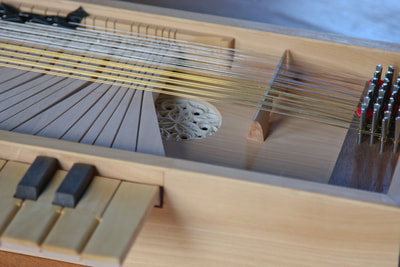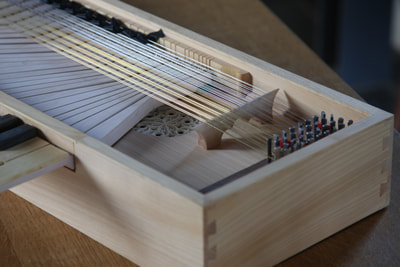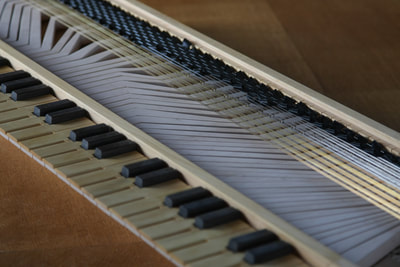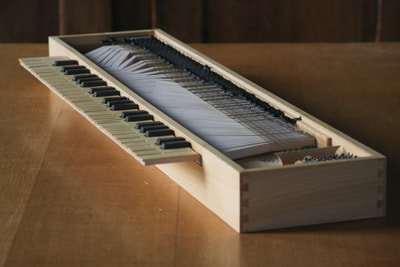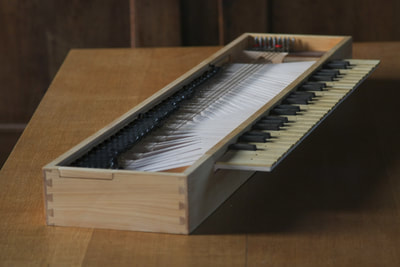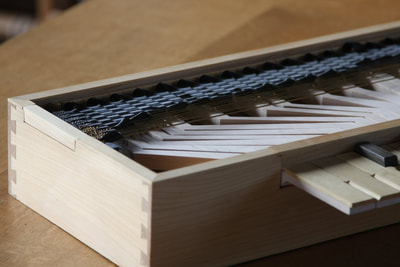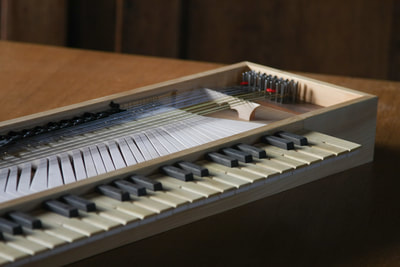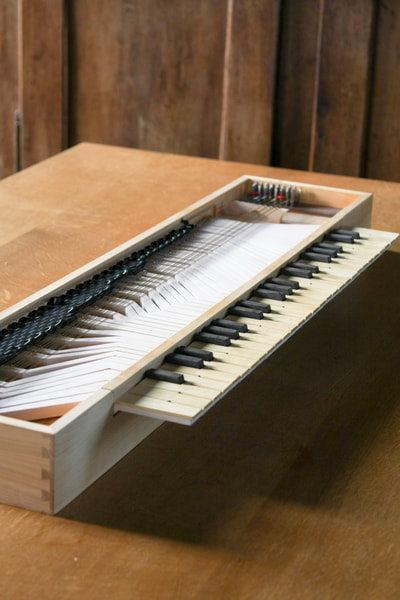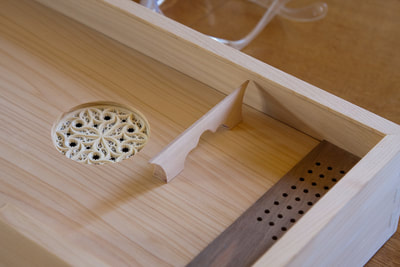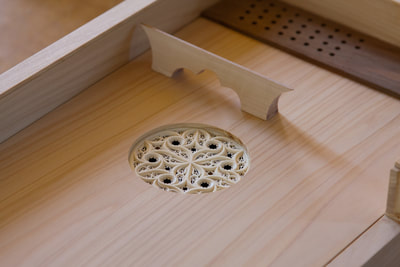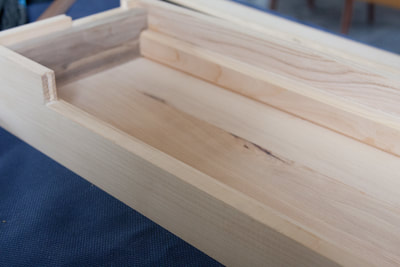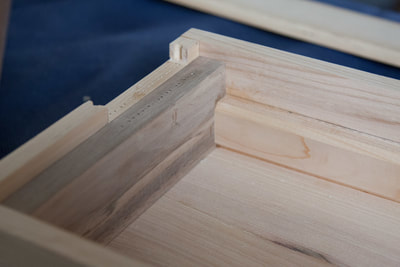Urbino Palazzo Ducale late 15th c.
Fretted clavichord (3- and 4- fretted) after the intarsia of the Ducal Palace of Urbino, ca. 1479
F-f3 without F#, without G#
49 keys
ca. 100 x 30 x 8 cm
This instrument is a replica of the fifteenth century clavichord represented on the walls of the studiolo of the Ducal Palace of Urbino (ca. 1479), in the Marche region, Italy. For a full description of the original instrument, with photographs and details, see: Pierre Verbeek, The Urbino Clavichord Revisited, De Clavicordio X, Proc. of the VIII International Clavichord Symposium, Magnano, 6-10 September 2011, Ed. by Bernard Brauchli, Alberto Galazzo, Judith Wardman, ISBN 978-88-907625-1-3, p. 205-224 and Pierre Verbeek, Technological Aspects of the Urbino Clavichord, The Galpin Society Journal 73, March 2021, p. 16-30. The Urbino clavichord is perfectly fitted for the music of the 14th, 15th, and early 16th century, including the very first music composed specifically for the keyboard. See for example the Buxheimer Orgelbuch, or the Robertsbridge codex or the Faenza codex, written in tablature. See also, to explore the whole compass from F to f3, the music composed by Marco Antonio Cavazzoni.
F-f3 without F#, without G#
49 keys
ca. 100 x 30 x 8 cm
This instrument is a replica of the fifteenth century clavichord represented on the walls of the studiolo of the Ducal Palace of Urbino (ca. 1479), in the Marche region, Italy. For a full description of the original instrument, with photographs and details, see: Pierre Verbeek, The Urbino Clavichord Revisited, De Clavicordio X, Proc. of the VIII International Clavichord Symposium, Magnano, 6-10 September 2011, Ed. by Bernard Brauchli, Alberto Galazzo, Judith Wardman, ISBN 978-88-907625-1-3, p. 205-224 and Pierre Verbeek, Technological Aspects of the Urbino Clavichord, The Galpin Society Journal 73, March 2021, p. 16-30. The Urbino clavichord is perfectly fitted for the music of the 14th, 15th, and early 16th century, including the very first music composed specifically for the keyboard. See for example the Buxheimer Orgelbuch, or the Robertsbridge codex or the Faenza codex, written in tablature. See also, to explore the whole compass from F to f3, the music composed by Marco Antonio Cavazzoni.
